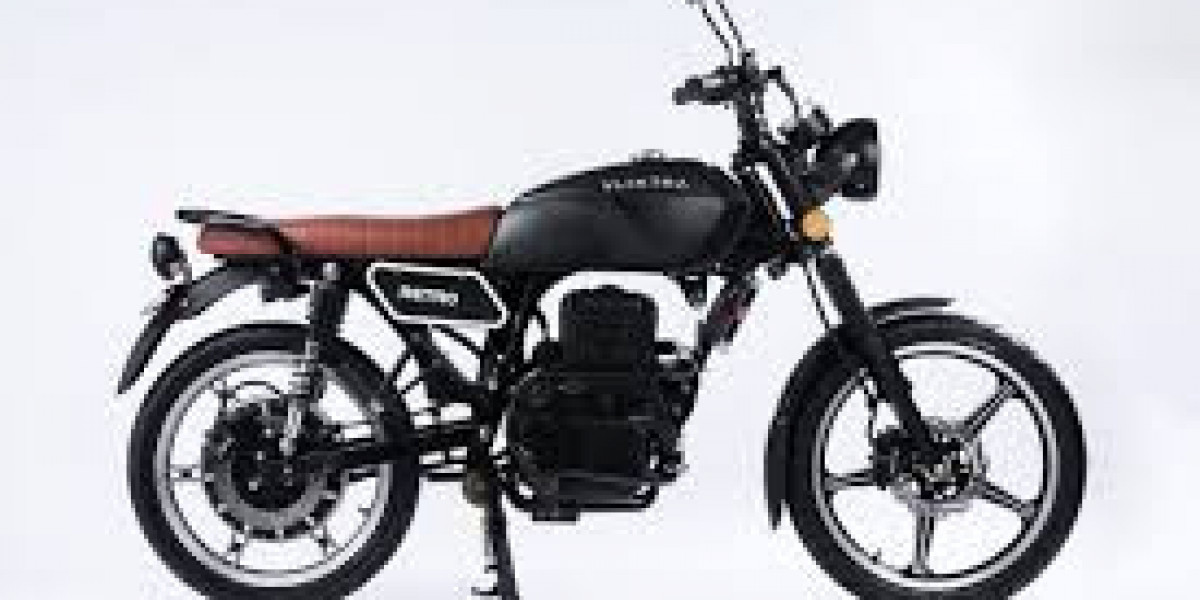What Are Electric Bikes?
An electric bike is a bicycle that features an electric motor to assist the rider while pedaling. The motor is powered by a rechargeable battery, which can be charged using a standard outlet. Unlike motorcycles or electric scooters, e-bikes still require pedaling, but the motor provides a boost, making it easier to travel longer distances or ride uphill. The level of motor assistance is adjustable, allowing the rider to customize the amount of help they receive based on their needs.
Core Components of an Electric Bike:
Motor: The motor can be located in either the wheel hub (hub motor) or the center of the bike frame (mid-drive motor). This motor assists with pedaling, reducing effort on challenging terrains.
Battery: E-bikes typically use lithium-ion batteries, which are lightweight and provide sufficient power for several hours of riding. The battery’s capacity will influence the range (how far you can travel) per charge.
Controller: This system helps the rider control the motor’s power and adjust the level of pedal assist. It is usually integrated with a display that shows information such as speed, distance, and battery life.
Pedal Assist vs. Throttle: Pedal-assist systems provide assistance when the rider pedals, while throttle-controlled e-bikes can be powered by the push of a button, providing a fully electric ride.
Benefits of Electric Bikes
Electric bikes offer a wide range of benefits that make them an attractive alternative to cars, public transport, and traditional bicycles. Here are just a few of the key advantages that e-bikes offer:
1. Eco-Friendly Alternative
E-bikes are a green mode of transportation. They produce zero emissions, which is crucial for reducing air pollution, especially in urban areas. With the growing concern about climate change, using e-bikes instead of cars helps decrease the overall carbon footprint, making e-bikes a key player in the shift toward sustainable transportation.
2. Cost-Effective Solution
When compared to cars, e-bikes are incredibly cost-effective. There’s no need to worry about high fuel costs, parking fees, or expensive maintenance. An e-bike’s operational cost is minimal, with the main expenses being the occasional battery replacement and general maintenance (which is much cheaper than car maintenance). Furthermore, many cities offer tax incentives and subsidies for individuals purchasing electric bikes, reducing the initial investment.
3. Increased Mobility and Convenience
E-bikes are perfect for short trips around the city, which are often quicker and more convenient than driving. Traffic congestion, parking difficulties, and long waits for public transport can all be avoided with an e-bike. Plus, many e-bikes are designed to be lightweight and portable, making them easy to store or carry when necessary. For urban commuters, e-bikes often provide a faster, more reliable solution for getting from one place to another.
4. Health and Fitness Benefits
Even though e-bikes provide motorized assistance, they still offer numerous health benefits. Cycling helps build strength, improve cardiovascular health, and increase overall fitness levels. The motor support makes it easier to climb hills and ride longer distances without getting fatigued, encouraging more people to stay active. E-bikes also provide a low-impact exercise that’s gentle on the joints, making them suitable for all ages and fitness levels.
5. Enjoyable Rides
Many people find that the assistance provided by the electric motor makes cycling more enjoyable, especially when riding on challenging terrains or during long trips. Whether you're using it for commuting, errands, or recreation, e-bikes take away much of the physical strain, allowing you to enjoy the ride without worrying about fatigue. Plus, the added speed and ease of maneuverability make e-bikes fun for all ages.
Types of Electric Bikes
There are several different types of e-bikes, each designed to cater to a specific riding style or need. Depending on how you plan to use the bike, you'll find different models with varying features and capabilities.
1. City/Commuter E-Bikes
Designed for urban environments, commuter e-bikes are lightweight, comfortable, and built for short-to-medium distances. These bikes are equipped with features like built-in lights, racks for carrying bags, and fenders for protection against rain or mud. They are perfect for daily commutes to work or school and can help you avoid the hassle of traffic and parking.
2. Mountain E-Bikes
Mountain e-bikes are designed for off-road adventurers. These bikes come with powerful motors, wider tires, and strong suspension systems to handle rough trails, rocky paths, and steep hills. Whether you’re tackling mountain paths or exploring rugged terrain, mountain e-bikes provide the extra power you need to conquer challenging environments with ease.
3. Folding E-Bikes
For those who live in apartments or have limited storage space, folding e-bikes offer a practical solution. These compact bikes can be folded up and carried on public transportation or stored in small spaces when not in use. Their portability makes them an ideal choice for commuters who need to combine cycling with other forms of transportation, like buses or trains.
4. Cargo E-Bikes
Cargo e-bikes are built for heavy-duty tasks such as carrying groceries, deliveries, or even children. These bikes feature reinforced frames, larger storage areas, and powerful motors to help riders transport goods over longer distances or up steep hills. Cargo e-bikes are becoming a popular choice for businesses, families, and individuals who need to haul items without relying on a car.
How Far Can You Ride on an Electric Bike?
The distance an e-bike can travel on a single charge depends on several factors, including the size of the battery, the motor power, the rider’s weight, and the terrain. On average, e-bikes can travel between 20 and 50 miles on a full charge. However, some high-end models can reach over 100 miles, especially if the rider uses lower levels of assistance. In addition, many e-bikes allow the rider to adjust the level of motor assistance, which can help extend battery life during longer rides.
How Fast Can an Electric Bike Go?
Most e-bikes are designed to reach speeds of up to 20-28 mph (32-45 km/h), with the motor assistance ceasing at these speeds. In many countries, regulations limit e-bikes to 20 mph (32 km/h) for safety reasons. Throttle-controlled e-bikes generally have a speed limit of 20 mph, while pedal-assist models may allow riders to reach higher speeds on flat terrain. This speed is generally sufficient for commuting and recreational rides.
The Future of Electric Bikes
As cities continue to push for more sustainable transportation solutions, e-bikes are expected to play a significant role in the future of urban mobility. With advancements in battery technology, motor efficiency, and bike design, e-bikes are becoming increasingly accessible and affordable. Cities around the world are also investing in bike lanes and infrastructure to make cycling safer and more convenient.
As more people adopt electric bikes for commuting, recreational rides, and deliveries, the global e-bike market is projected to grow exponentially in the coming years. This growth is a testament to the increasing demand for clean, cost-effective transportation options and the evolving role of e-bikes in shaping sustainable cities.
Conclusion
Electric bikes are redefining the way we move, offering a sustainable, cost-effective, and fun alternative to traditional modes of transportation. Whether you’re looking to reduce your carbon footprint, save money on commuting, or simply enjoy the freedom of cycling with less effort, e-bikes provide an ideal solution. As e-bikes continue to evolve and become more accessible, they’re set to play a major role in the future of transportation, offering a cleaner, healthier, and more efficient way to get from point A to point B.







